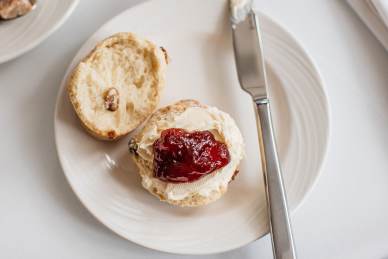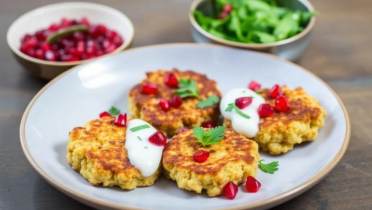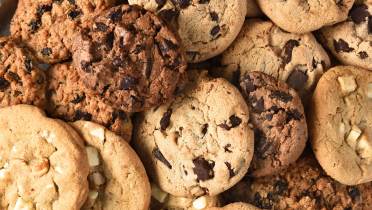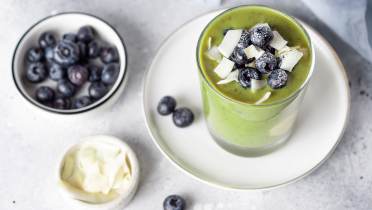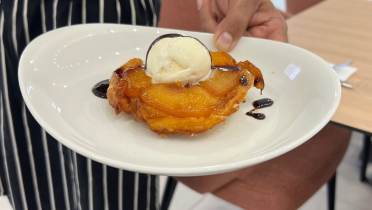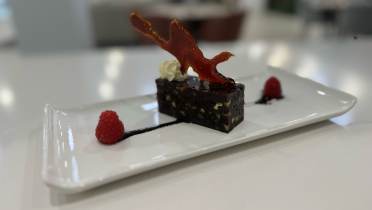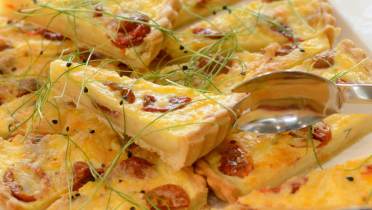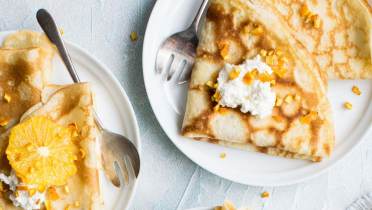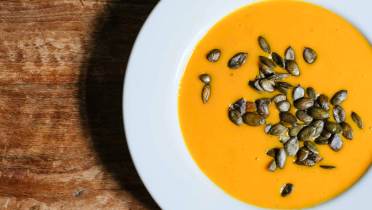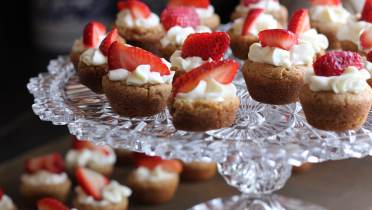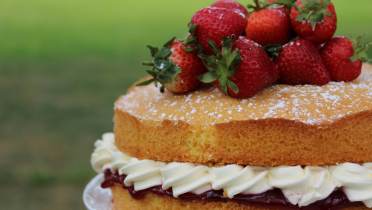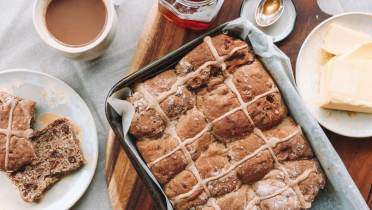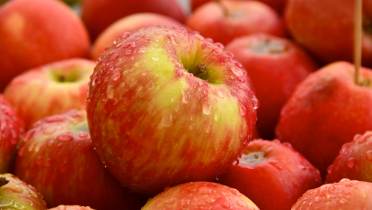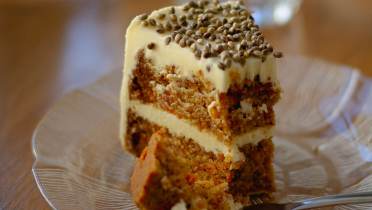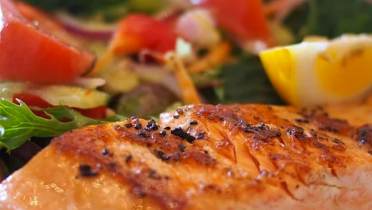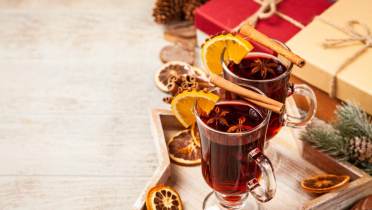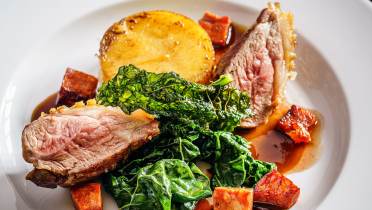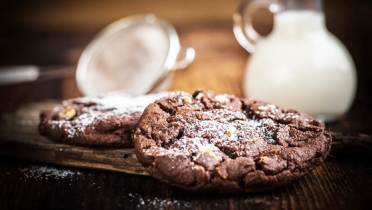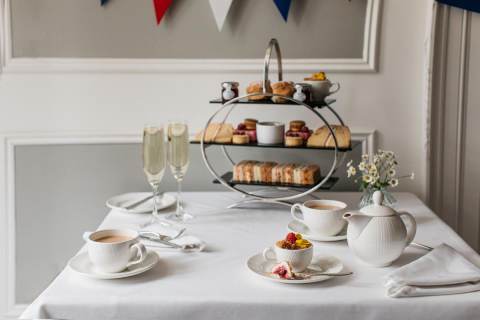
With the Queen's Platinum Jubilee celebrations just around the corner, we're celebrating all things British - including the tradition of serving scones for High Tea.
This recipe makes 10 – 12 buttermilk and currant scones.
Ingredients:
- 250g self-raising flour
- 1 tbsp baking powder
- 2 tbsp golden caster sugar
- ½ tsp salt
- 45g cold unsalted butter, cut into small cubes
- 175ml buttermilk
- 50g dried currants (Currants have a strong, tangy taste which is perfect for scones)
Method:
- Top tip: Always use cold ingredients! It is essential that the butter is cold so that it doesn't start to melt until it's in the oven - that's what gives scones their super flaky texture. Small flakes of cold butter in the dough will also help your scones to rise better. The buttermilk also needs to be cold to keep the entire mix chilled until it's in the oven.
- Sieve the flour, baking powder and salt into a bowl, then add sugar and mix with a wooden spoon.
- Add the chilled butter to the flour mix and rub together gently with your fingers until it forms - roughly about the size of a pea.
- Add the buttermilk and the currants, and gently mix with a wooden spoon or spatula until the dough holds together. If the mixture seems dry, add a tablespoon more buttermilk (or more as needed). Knead gently with your hands to help the dough come together if needed. Top tip: Do not over knead or your scones won't rise and you'll lose that light, fluffy texture.
- Dust a work surface with flour, using your hands pat the dough into a rectangle about 1½ inches thick. Using a 2.5-inch biscuit cutter, cut dough into about 8 circles. Gently knead the scraps together and repeat to make the final few scones.
- Transfer the 10 or 12 scones to a baking sheet and brush with a little melted butter and buttermilk.
- Bake at 190C (fan assisted) for 10-12 minutes or until golden and cooked through. Top tip: If they're ready to come out of the oven, they will sound hollow when you tap them with your fingers. You can also insert a skewer or toothpick into the scone - if it comes out clean, your scones are cooked.
Did you know?
- You can use milk or cream, although buttermilk retains its acid content which is what we need for scones. Buttermilk is also virtually fat-free so considered to be healthier and lighter than cream.
- If you'd like to play around with the flavour of your scones, without risking the texture, why not try a pinch of cinnamon?
- A scone is closer to a pastry than it is to bread - a scone has almost identical ingredients to a shortcrust pastry with different fat to flour ratios.
- Should we say "s-con" or "s-cone". The age-old debate continues. The pronunciation has more to do with your geographical origins than it does with social class. So, personal preference we say. What does the Queen say?
- Scones were intended to be enjoyed at 4 o'clock in the afternoon, which is still the time Afternoon Tea is typically served.
- Scones originate from the Scottish 'bannock', which is derived from the Gaelic for cake and made using a thin, round, flat combination of oats and wheat flour.
- The term 'scones' was first used in 1513 according to the Oxford English Dictionary.
Thanks to Bruce, Head Chef at The Clevedon at Ben Rhydding restaurant in Ilkley, for sharing this recipe.

Looking for a Royal Tea dining experience?
Visit an Audley restaurant near you between 23rd May and 5th June to enjoy a themed afternoon tea.


